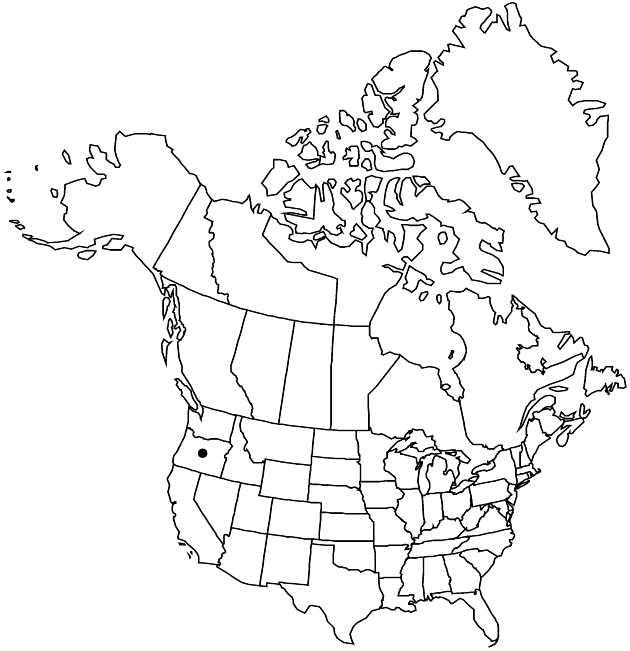Packera hesperia
Phytologia 49: 47. 1981.
Perennials, 7–15+ cm; fibrous-rooted (caudices relatively slender). Stems 1, glabrous or sparsely tomentose. Basal leaves (and proximal cauline) petiolate; blades ovate, oblanceolate, or spatulate, 10–30 × 5–20 mm, bases tapering, sometimes obtuse, margins entire, subentire, or dentate. Cauline leaves abruptly reduced (sessile, clasping; bractlike, entire). Heads 1–4+ in corymbiform arrays. Peduncles bracteate (bractlets red-tinged), densely lanate-tomentose. Calyculi conspicuous (bractlets narrow, red-tinged). Phyllaries (13–) 21, green (tips red or dark red), densely tomentose proximally. Ray-florets (8–) 13; corolla laminae 6–10+ mm. Disc-florets 35–50+; corolla-tubes 2.5–3.5 mm, limbs 3–4 mm. Cypselae 1.5–2 mm, glabrous; pappi 5–6 mm. 2n = 46.
Phenology: Flowering mid Apr–mid Jun.
Habitat: Serpentine derived soils, open woodland scrub
Elevation: 500–2500 m
Discussion
Of conservation concern.
Packera hesperia is known only from the Siskiyou Mountains.
Selected References
None.
